Up Next

Hungarian Grand Prix practice day was one of those Fridays where the weather ensures the teams have nothing like the amount of data they like to have to base their qualifying and race strategies around.
The first practice session was at least conducted on a mainly dry track, albeit a cool one and just on the cusp of drizzle. The afternoon session was wet throughout.
The forecast for Saturday is a possibly wet free practice three, but a likely dry qualifying, followed on Sunday by a dry race. This means the only significant practice running looks set to be that of this morning.
On single lap pace, the Mercedes had an enormous advantage, with the proviso that the Red Bulls were in trouble with the balance, had their engines turned way down and did relatively little running.
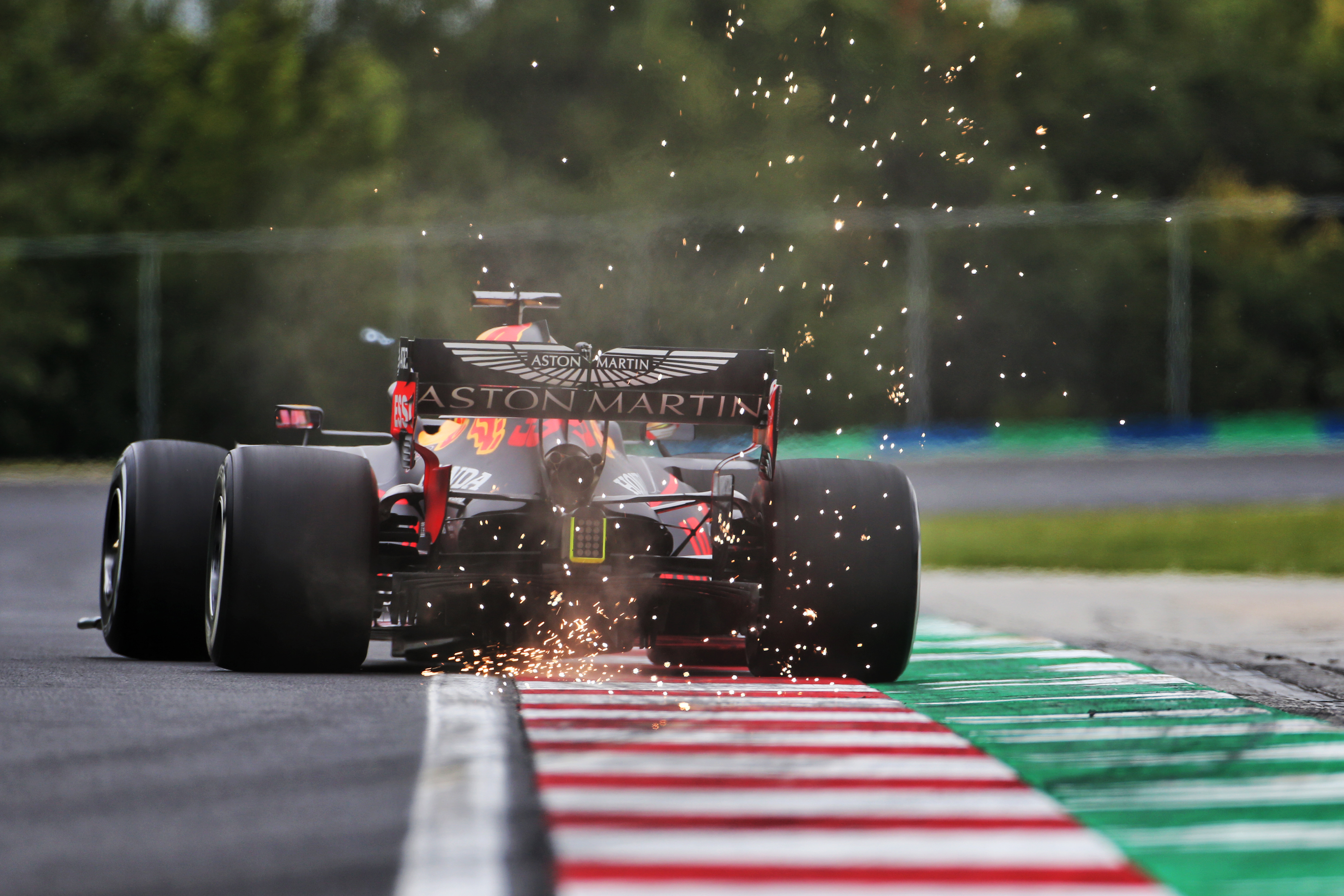
Lewis Hamilton’s best single lap was set on the hard tyre (the C2) but was over half-a-second quicker than the best non-W11 – Sergio Perez’s Racing Point, with a lap set on the soft tyre (the C4). Hamilton’s time just eclipsed that set by his medium-shod team-mate Valtteri Bottas.
In the cool conditions, most teams were not confident they would immediately be able to get the soft tyres working and based their early running around the medium and the hard.
Mercedes, though, was straight onto the softs with both drivers and sufficiently encouraged by the car’s behaviour on them that it was then on the harder of the two tyres later in the session – when the Racing Points, Red Bulls and Lando Norris’s McLaren were on the softs.
The soft was expected to be around 1s quicker than the hard, around 0.4s quicker than the medium – but the cool conditions seem to have reduced those margins. This had the effect of making the Mercedes’ big pace advantage look enormous.
SINGLE-LAP PACE (FP1)
1 Mercedes (Hamilton), 1m16.003s
2 Racing Point (Perez), 1m16.530s
3 Renault (Ricciardo), 1m17.200s
4 Ferrari (Vettel), 1m17.238s
5 Red Bull (Verstappen), 1m17.435s
6 McLaren (Sainz), 1m17.675s
7 Haas (Magnussen), 1m17.713s
8 Williams (Latifi), 1m17.969s
9 AlphaTauri (Kvyat), 1m18.292s
10 Alfa Romeo (Giovinazzi), 1m18.425s
No-one really believes that Hamilton’s half-second advantage over Perez should really be 1.5s – but there’s that worrying question mark that it might be! But it certainly surprised the team.
“It was a bit surprising how competitive we were on the second runs,” said Mercedes trackside engineering director Andrew Shovlin.
“With Lewis on the hard tyre and Valtteri on the medium, they were both able to beat their previous times and ended up first and second in the order.
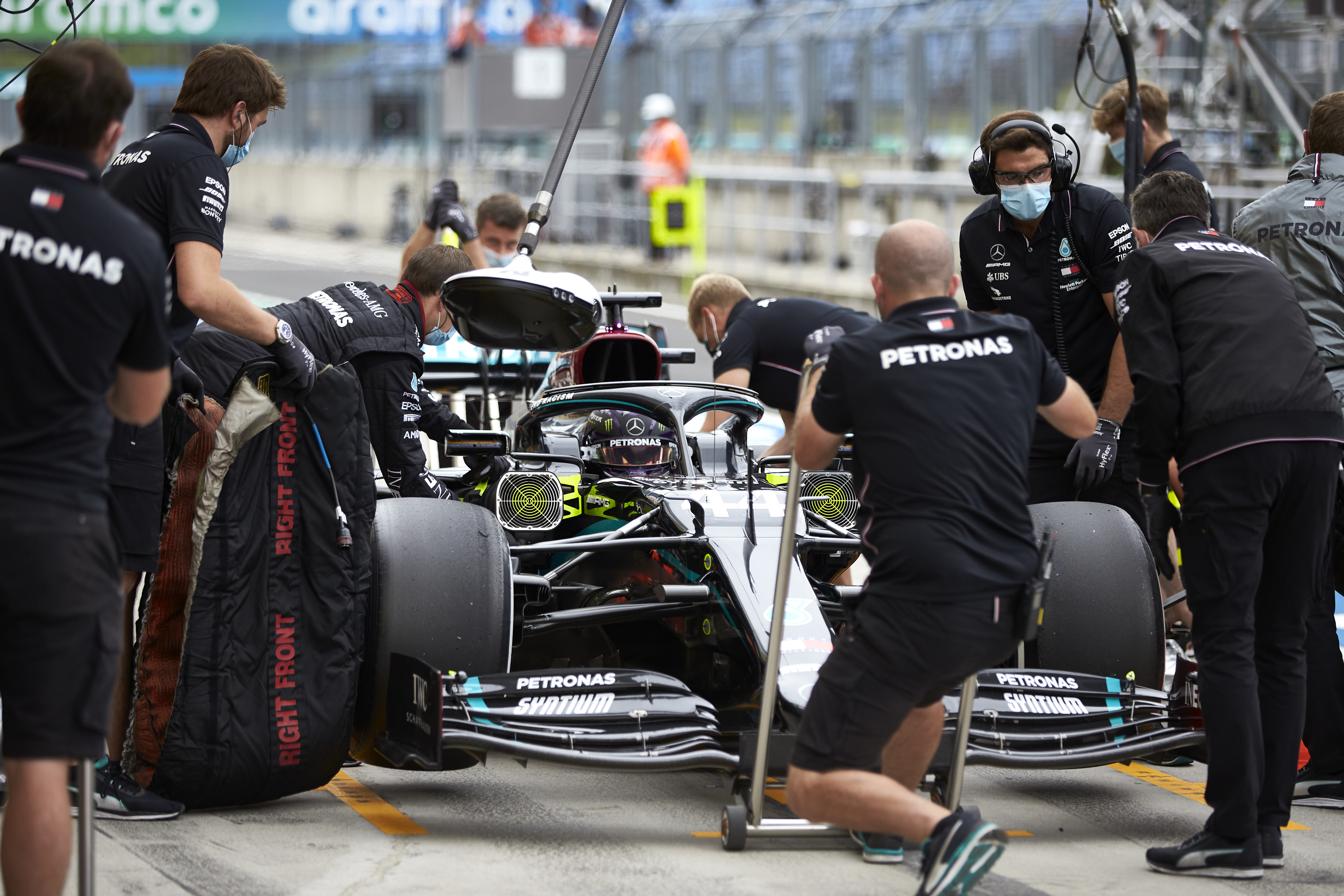
“You never know fuel loads and power unit modes until qualifying, but we do look to have made a decent start.
“The long-run pace seemed fine and as we’d seen last year, the soft doesn’t look like a great race tyre.”
A few mini long runs were attempted at the end of the dry session in the near-certain expectation that practice two would be wet. Hamilton and Bottas did a 11 and 10-lap run respectively – with the averages as below.
The Ferraris of Sebastian Vettel and Charles Leclerc did shorter runs. Red Bull was in some disarray, its drivers very unhappy with the feeling of the cars through the circuit’s long-duration corners.
Because of the circumstances, the long-run data from first practice is patchy but it is possible to draw out the quickest runs from each team – albeit with a tyre difference.
LONG-RUN AVERAGES
Mercedes (Hamilton), 1m20.674s – Hard
Ferrari (Vettel), 1m20.920s – Medium
Red Bull (Verstappen), 1m22.222s – Soft
Renault (Ricciardo), 1m21.488s – Medium
Haas (Grosjean), 1m22.677s – Medium
McLaren (Sainz), 1m21.832s – Soft
Racing Point (Stroll), 1m22.869s – Medium
Williams (Russell), 1m22.125s – Hard
AlphaTauri (Kvyat), 1m22.304s – Medium
Vettel looked very much at ease in the full wet conditions of the afternoon consistently quicker than team-mate Leclerc – and headed the times. He was marginally quicker than Bottas, with the proviso that the Mercedes driver made only one serious lap in the wet and Vettel made several. Neither Hamilton nor the Red Bulls did a full flying lap in the wet.
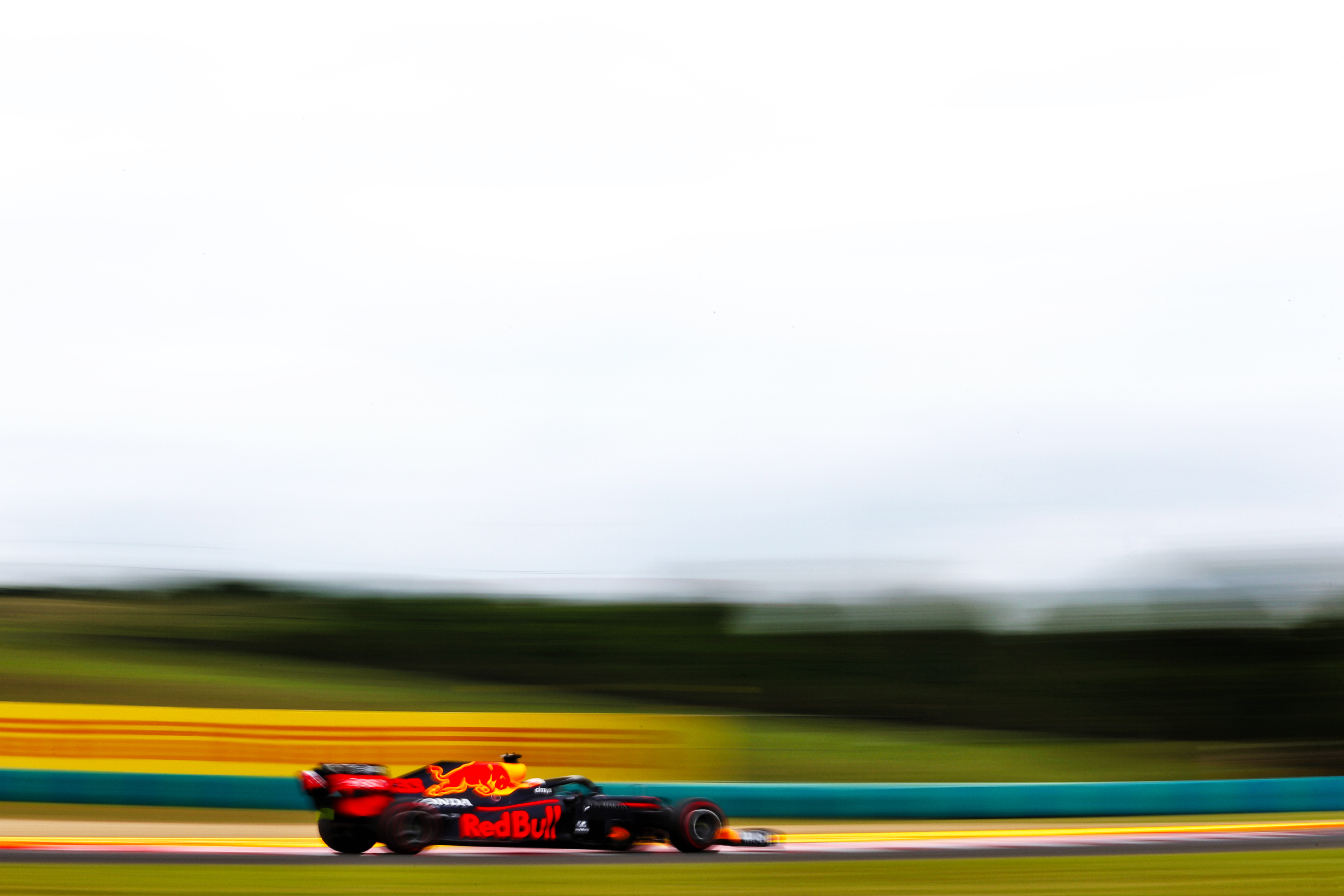
So can we expect there to be any serious opposition from Red Bull? Max Verstappen wasn’t happy during the dry session, referring only to lacking in “balance overall” and the fact his team has a lot of work to do.
Team-mate Alex Albon was a little more illuminating, pointing to the problems with predictability that have been a problem since pre-season testing and leading to the Red Bull being the most-spun car of F1 2020.
“It’s more predictability than anything else, it’s not one corner or a specific place or anything – just everywhere,” said Albon.
“The car isn’t quite what we want and we just have to do some work to find out what’s going on.”
While Red Bull’s position relative to Mercedes is unclear, it is easy to conclude Racing Point leads the group of midfielders, which based on the dry outright pace and the evidence of the Red Bull Ring, still resoundingly includes Ferrari.
Racing Point also had the chance to revisit the wet conditions that stymied it in Styrian Grand Prix qualifying when getting temperature in the tyres proved difficult.
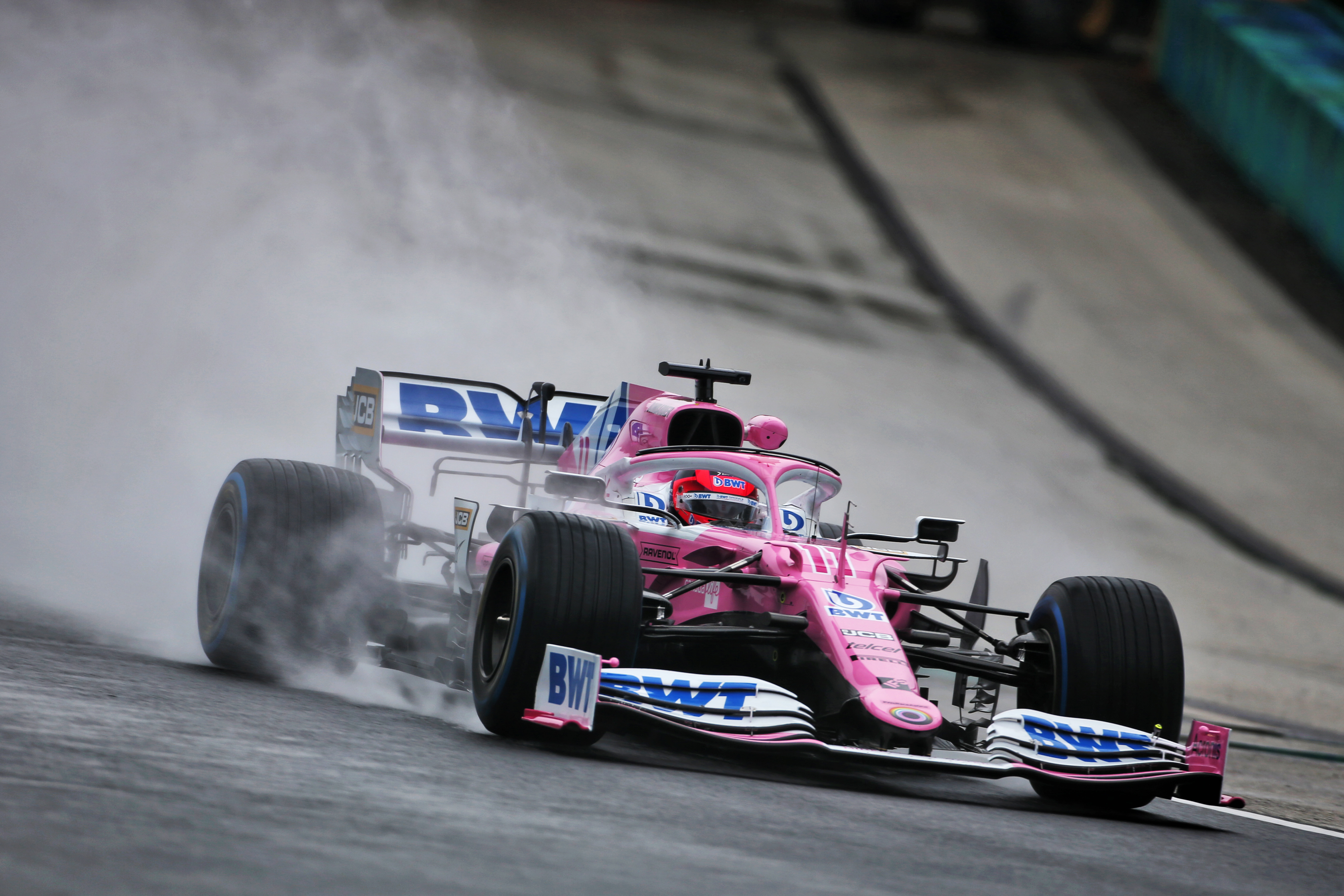
“It was very important,” said Racing Point team principal Otmar Szafnauer. “We weren’t past performant in wet last time and it’s good to be getting some more running on the wet tyre.
“You’ve got to understand the range of where you want to be and thereafter work on turning it on. Our was a bit too stiff as well for the wet, but it proved to be a good race car in the dry with us.
“Generally it’s all about set-up for Sunday, not so much for Saturday, but there are some tracks where Saturday is really important. I think this is one of them.”
With Renault and Ferrari relatively close together, McLaren was struggling at a track where it performed well last year and qualified at the front of the midfield.
“It was weird,” said Carlos Sainz Jr. “There was nothing fundamentally wrong with the car, it was just the lap time and the way that we made the tyres work. We were not switching them on the way we wanted to.
”We didn’t expect to struggle as much. We don’t know if we would have improved or not, that is the thing. We go with a question mark into tomorrow.”
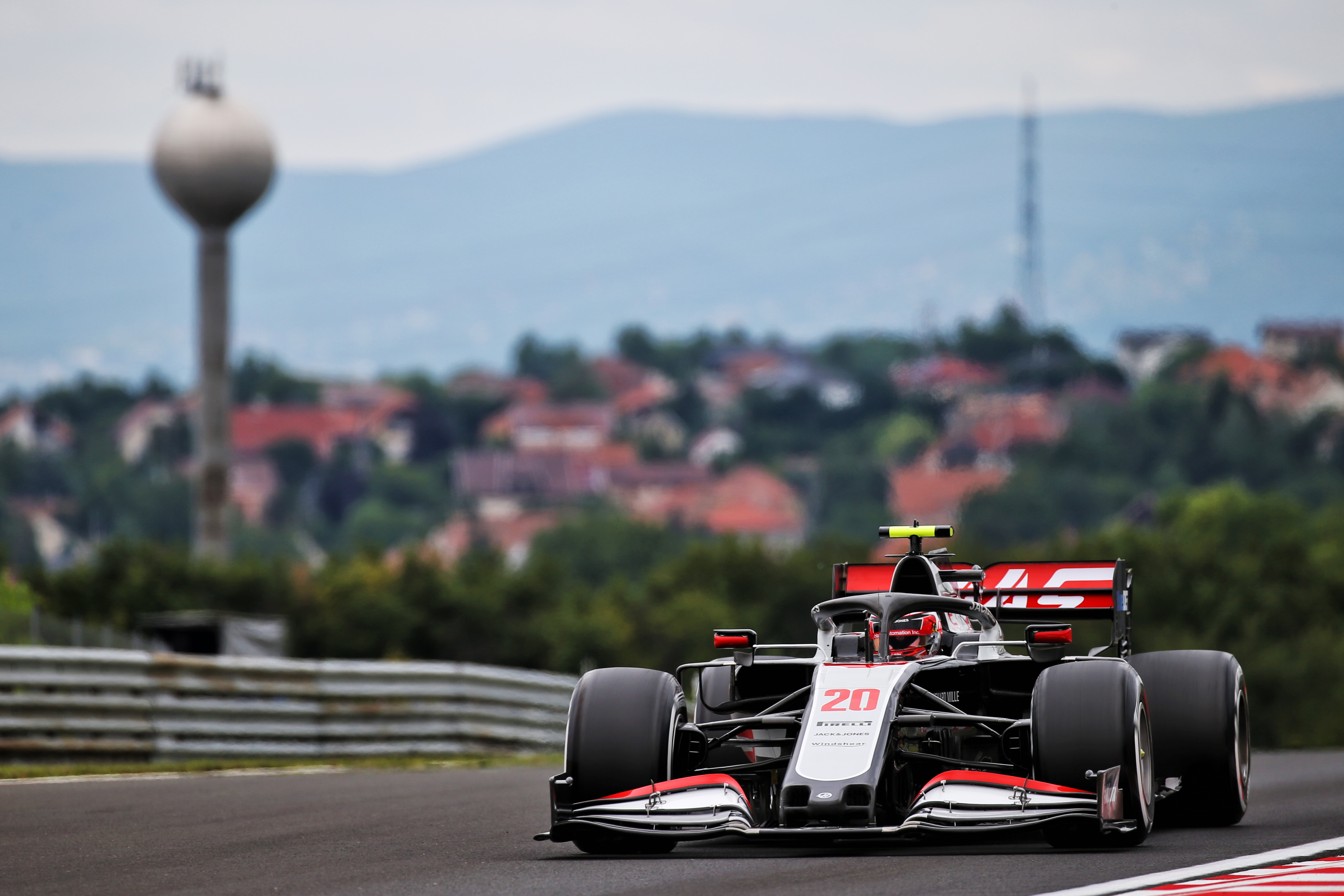
There were hints that Haas might be stronger this weekend, with both drivers happy with the feel of the car. Having been resoundingly in the ‘Class C’ battle with Alfa Romeo and Williams at the Red Bull Ring, there was hope that this might allow it at least to fight with AlphaTauri. Although the Red Bull junior team had a difficult day, losing Pierre Gasly for the dry session thanks to a sensor problem.
Friday running always poses as many questions as it answers. But in Hungary 2020, it provided even less certainty than normal.



